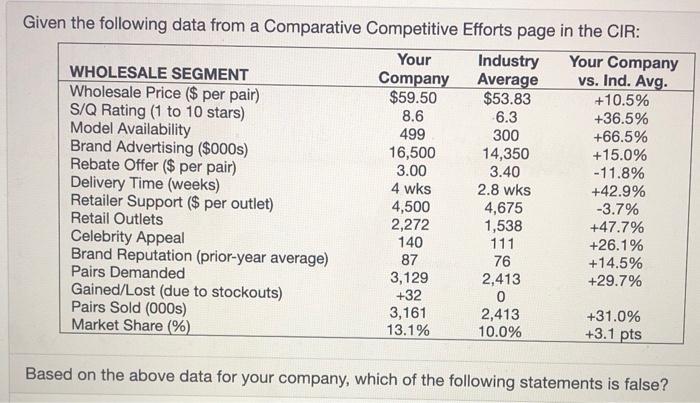Answered step by step
Verified Expert Solution
Question
1 Approved Answer
Given the following data from a Comparative Competitive Efforts page in the CIR: WHOLESALE SEGMENT Wholesale Price ($ per pair) S/Q Rating (1 to 10


Step by Step Solution
There are 3 Steps involved in it
Step: 1

Get Instant Access to Expert-Tailored Solutions
See step-by-step solutions with expert insights and AI powered tools for academic success
Step: 2

Step: 3

Ace Your Homework with AI
Get the answers you need in no time with our AI-driven, step-by-step assistance
Get Started


